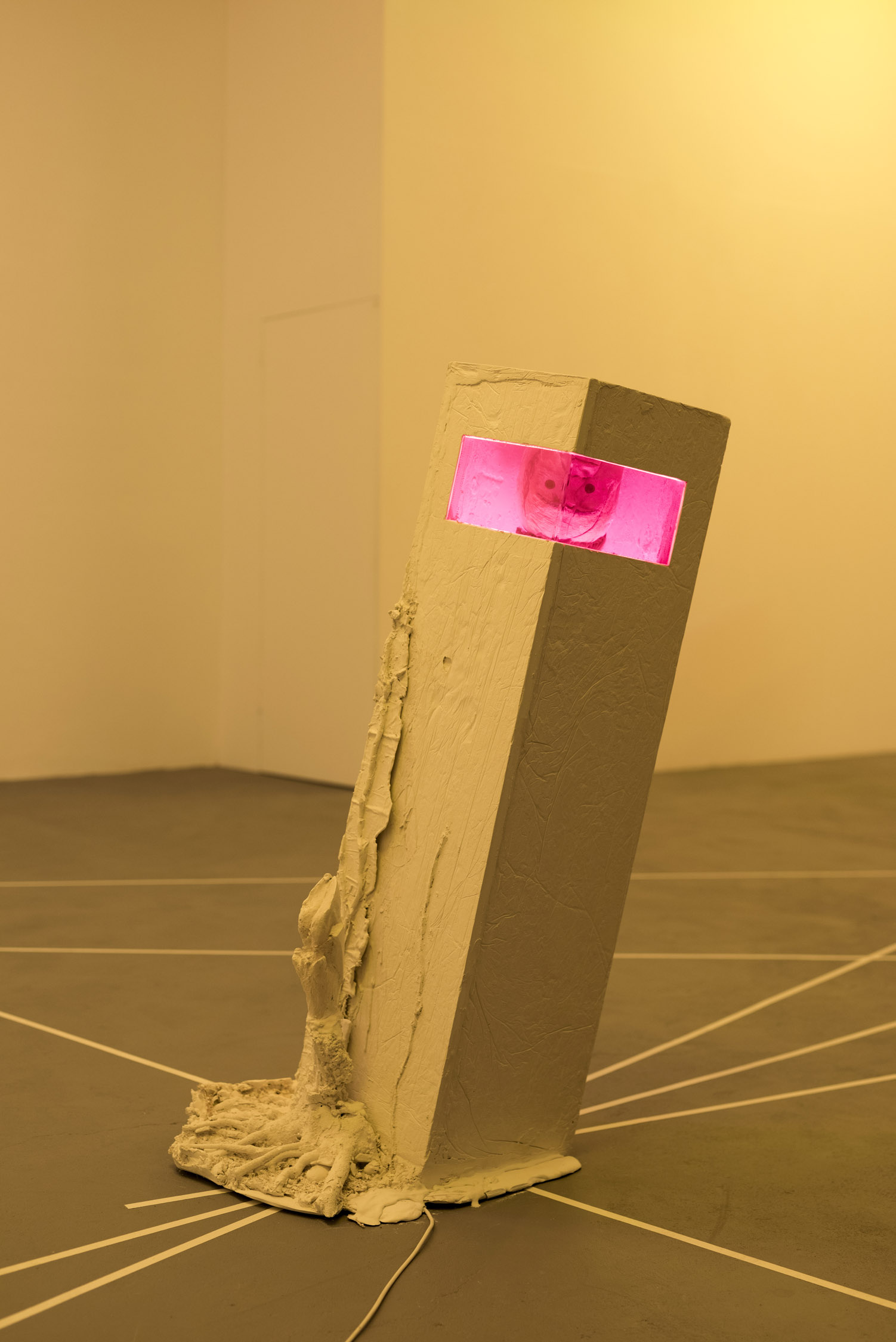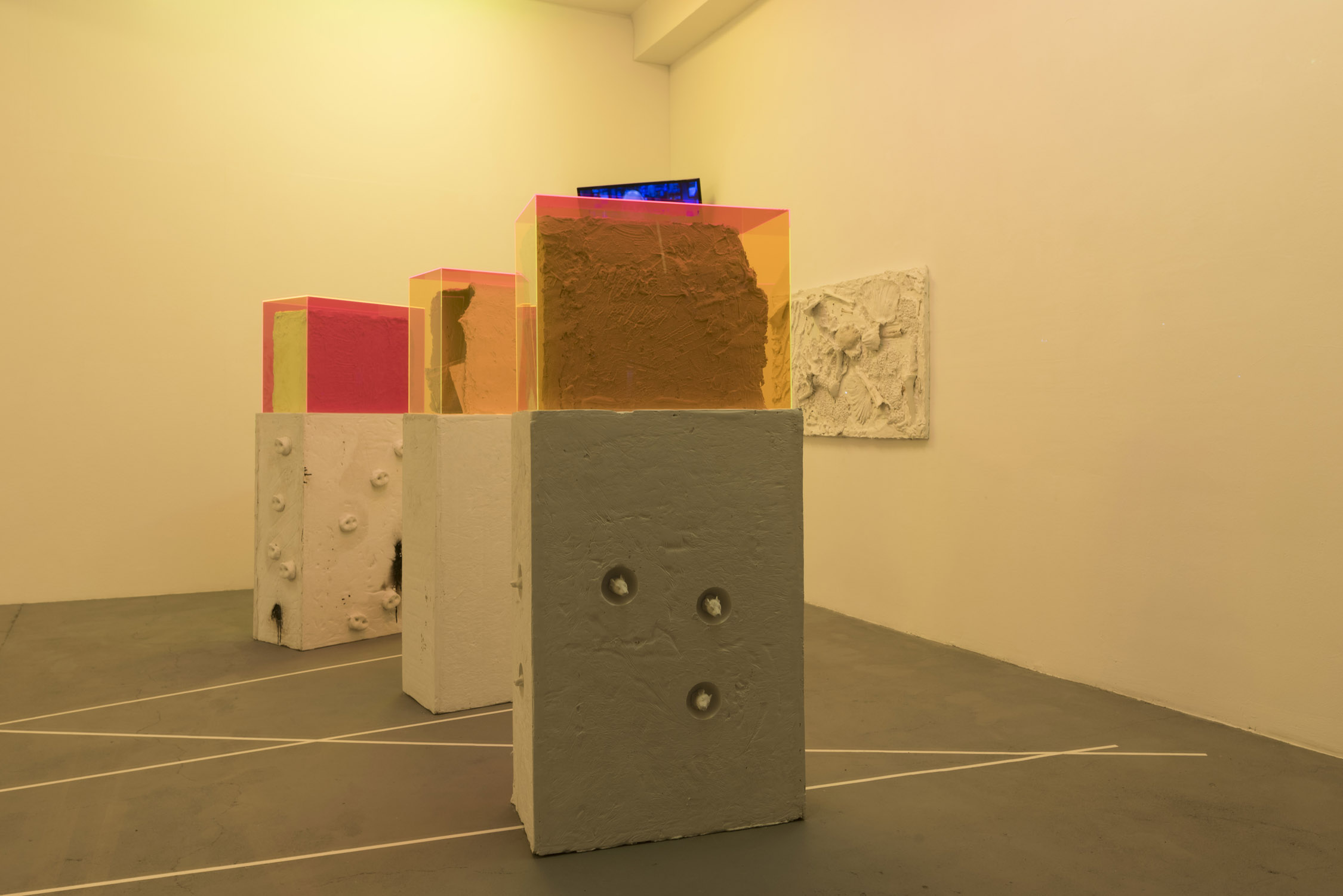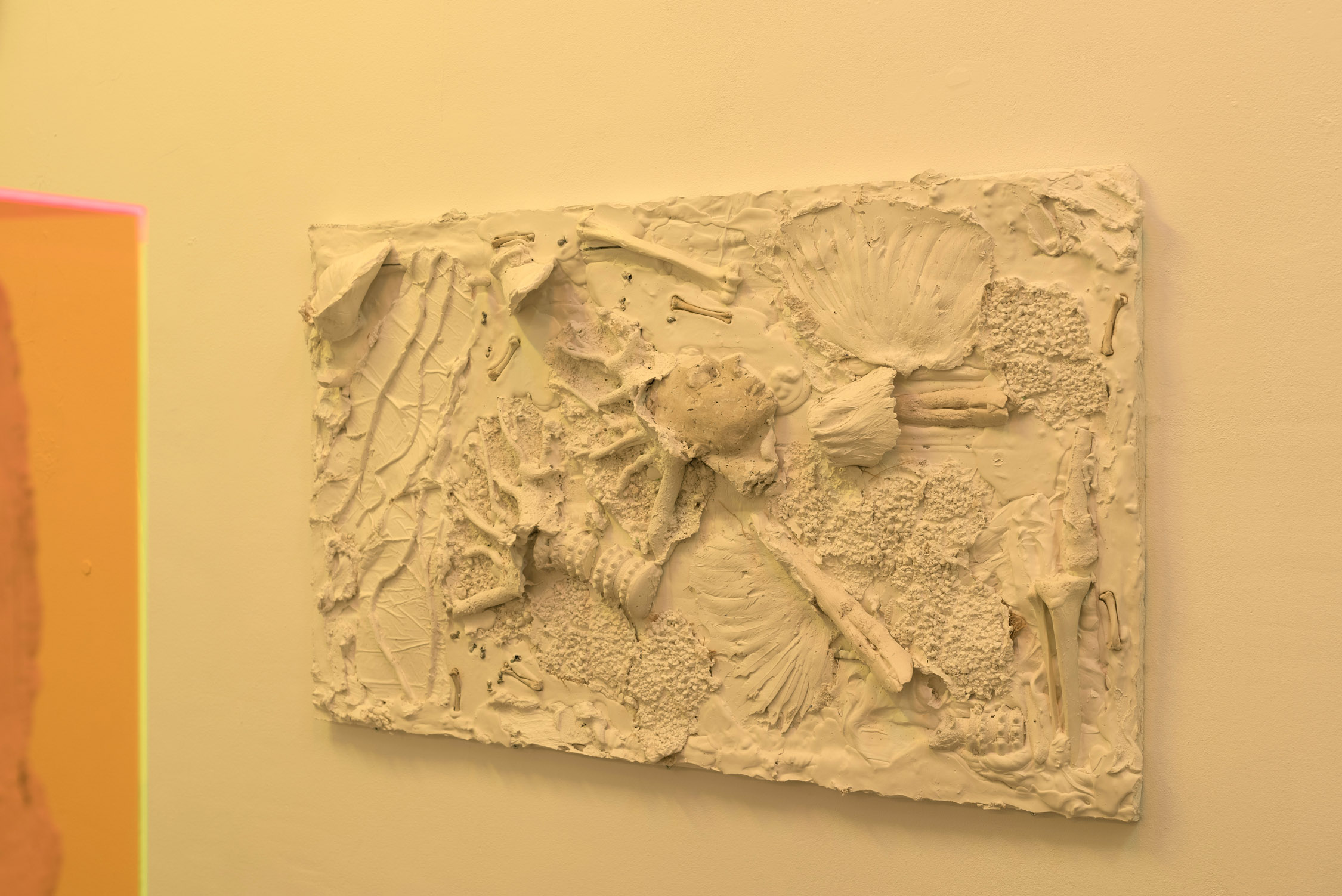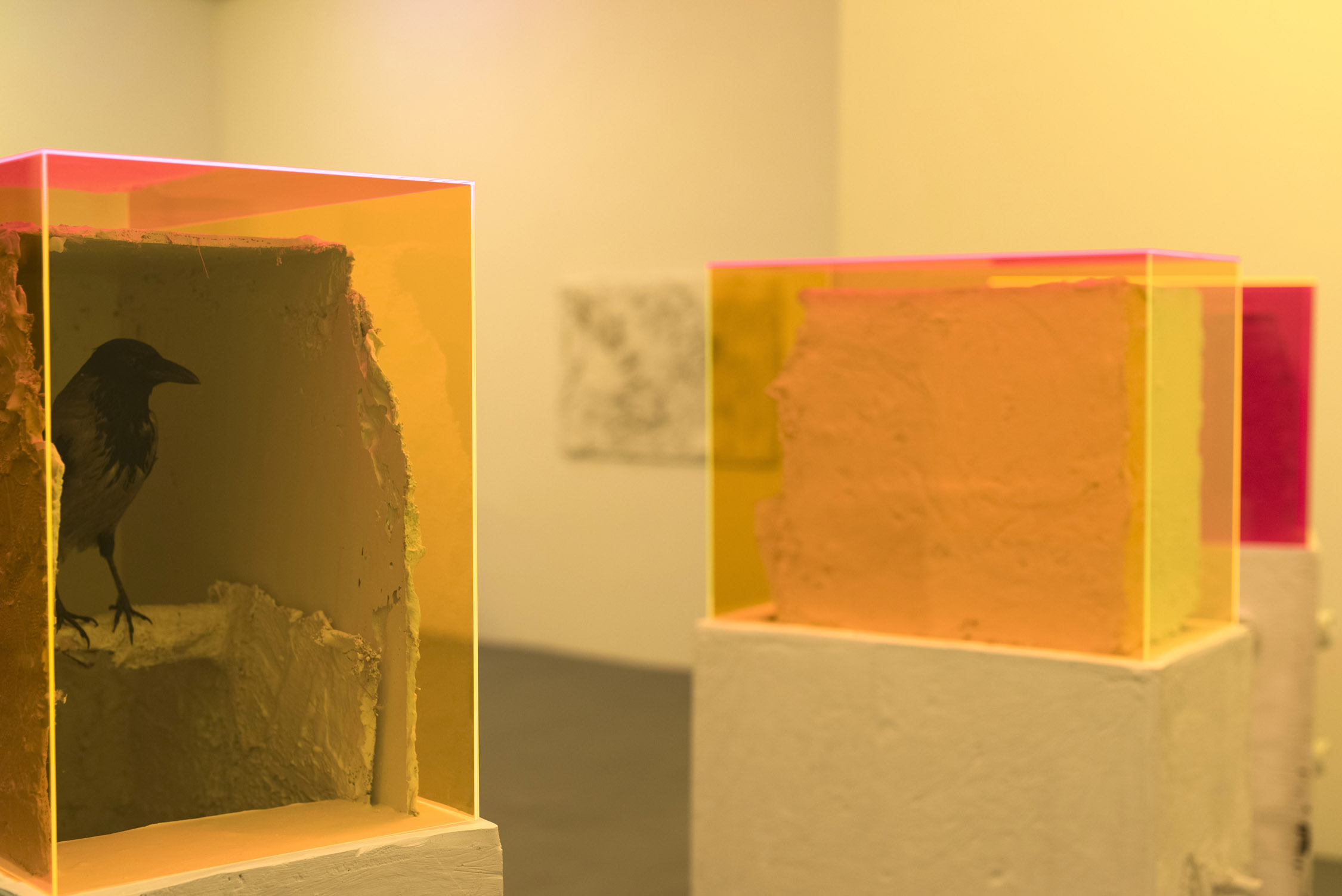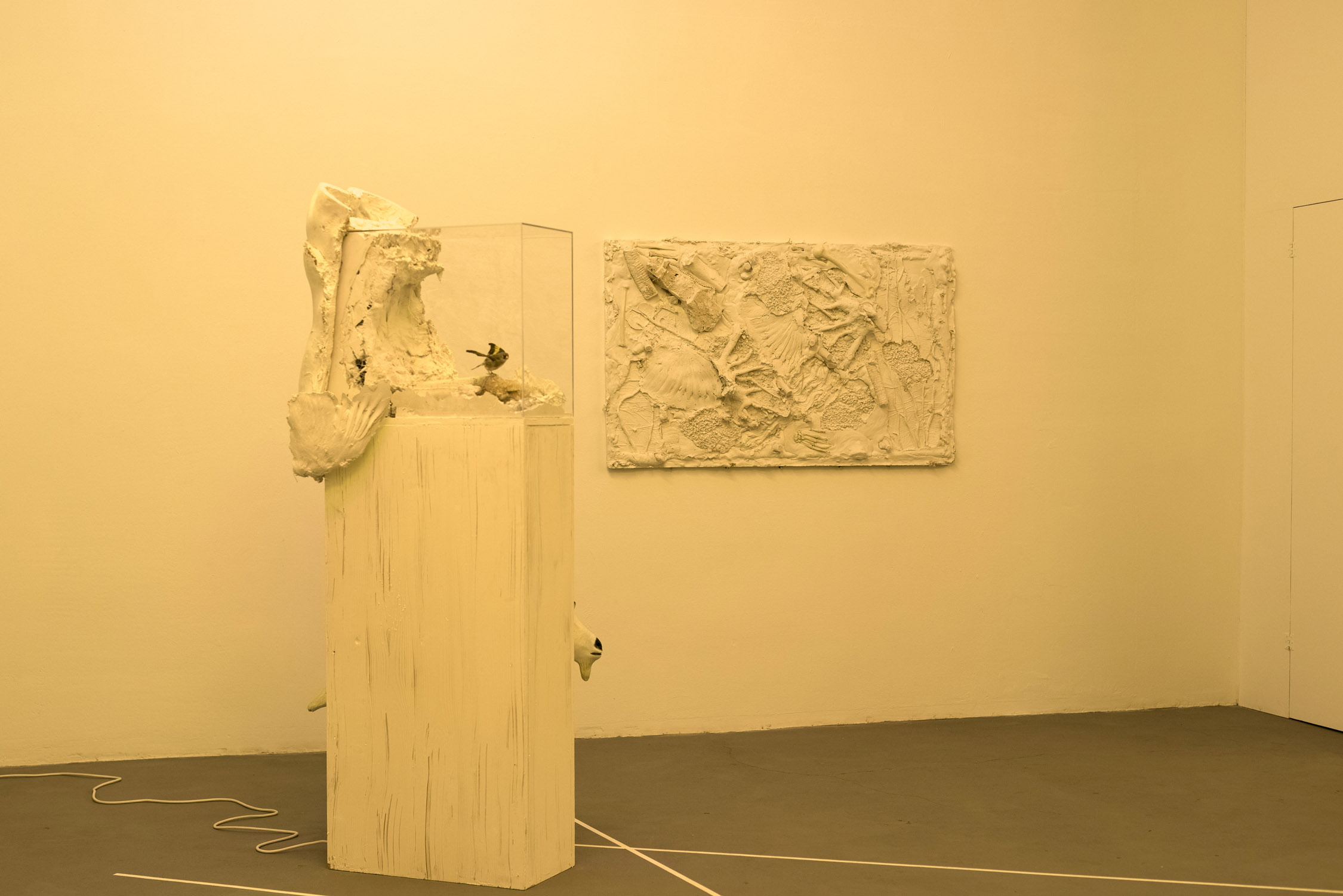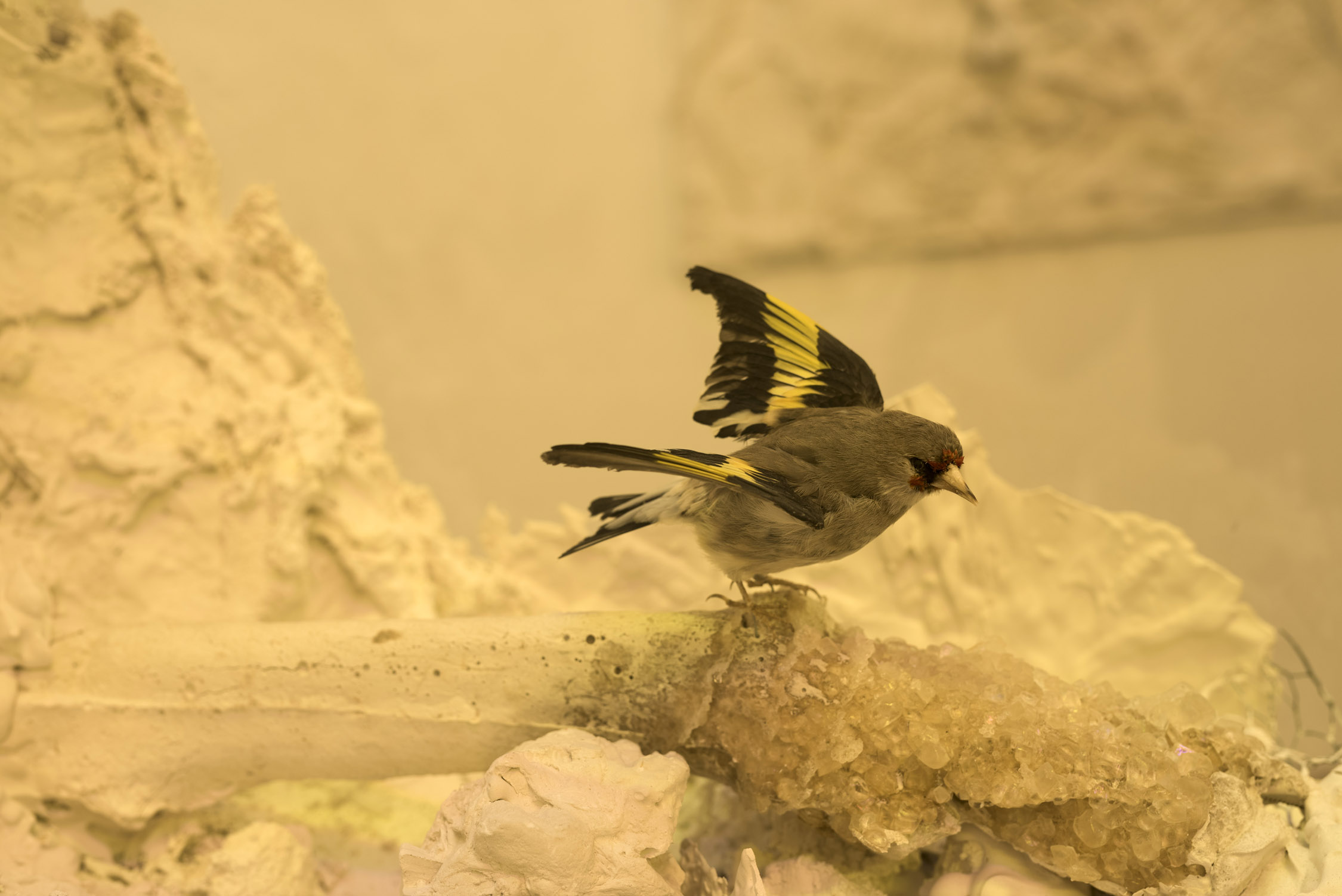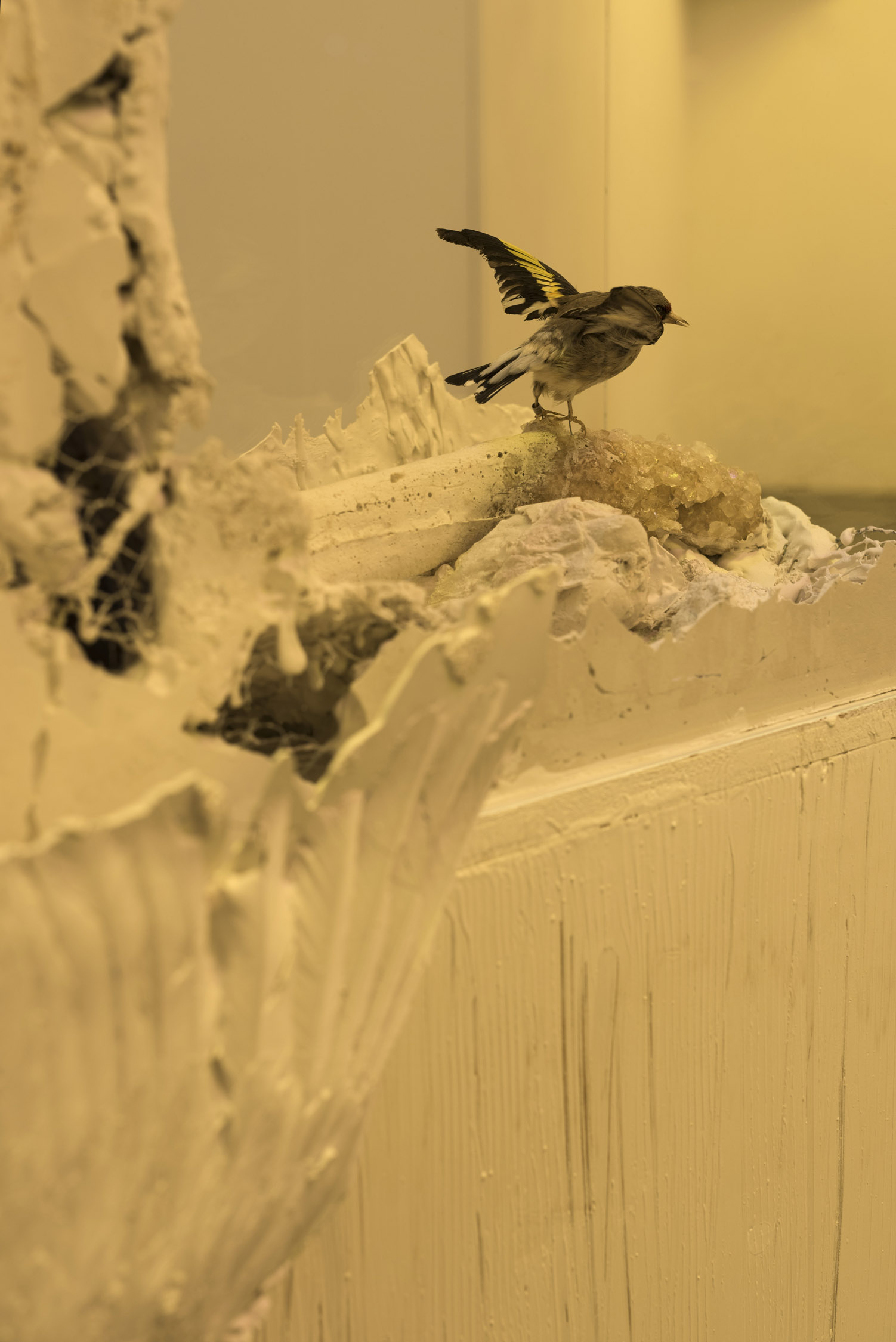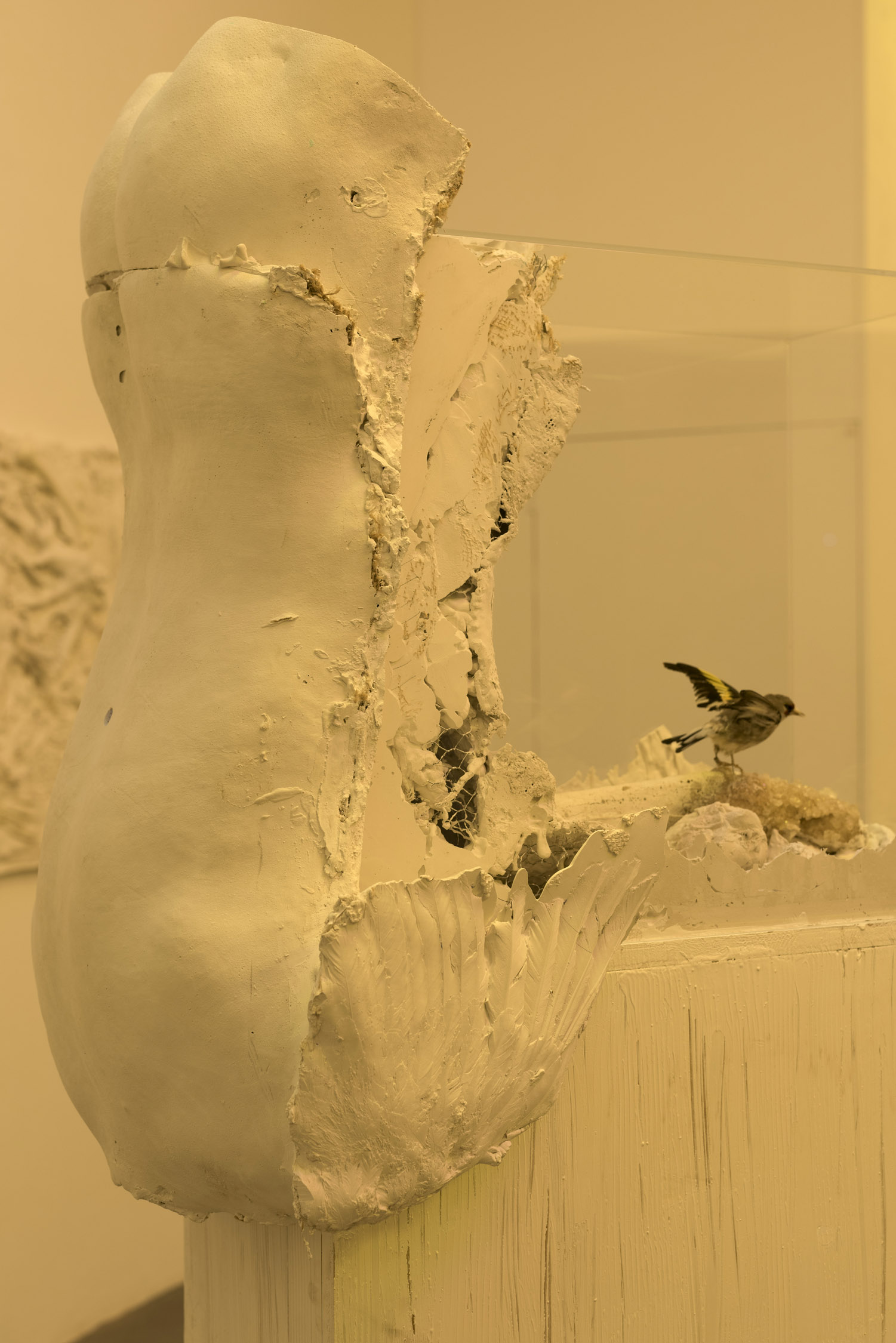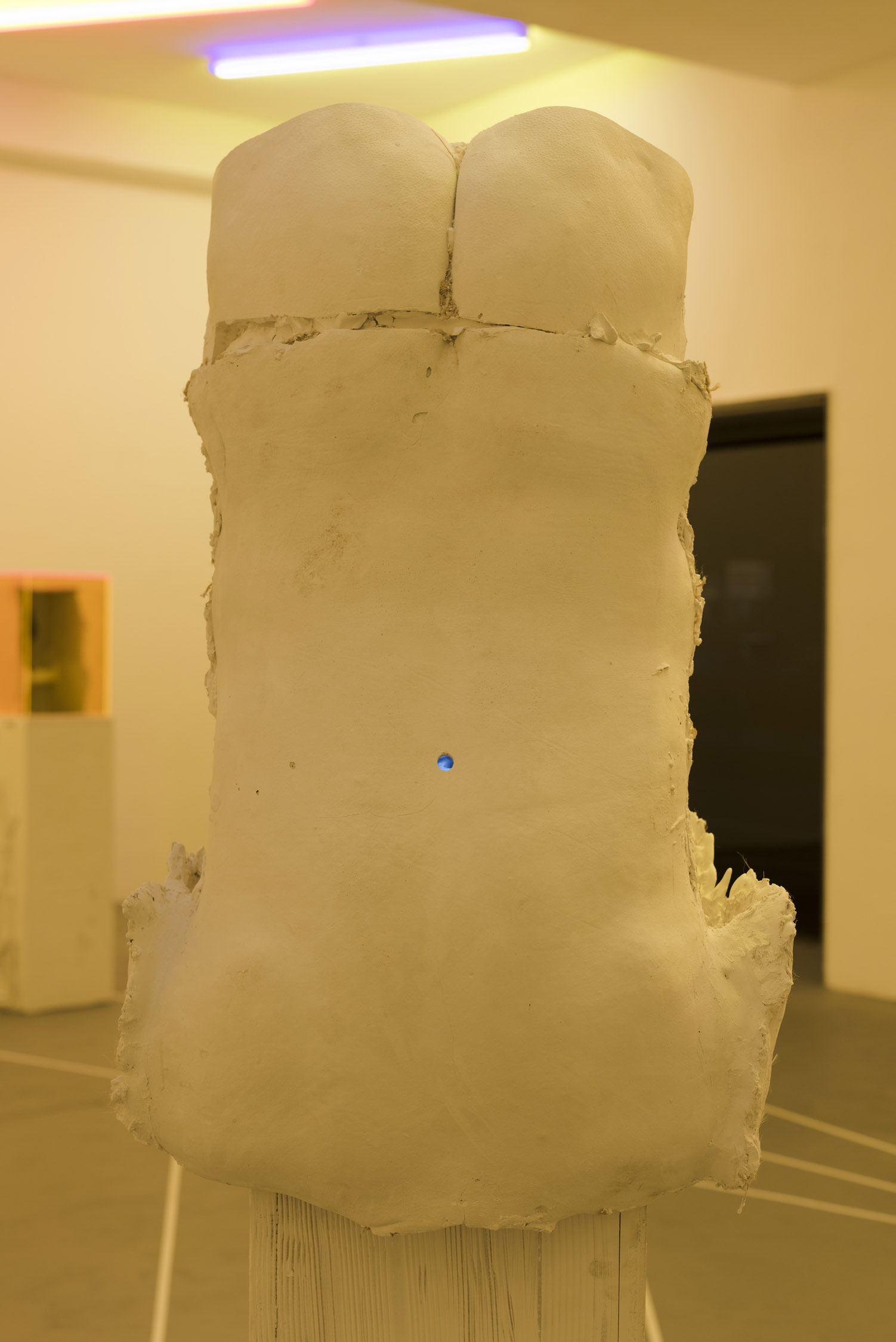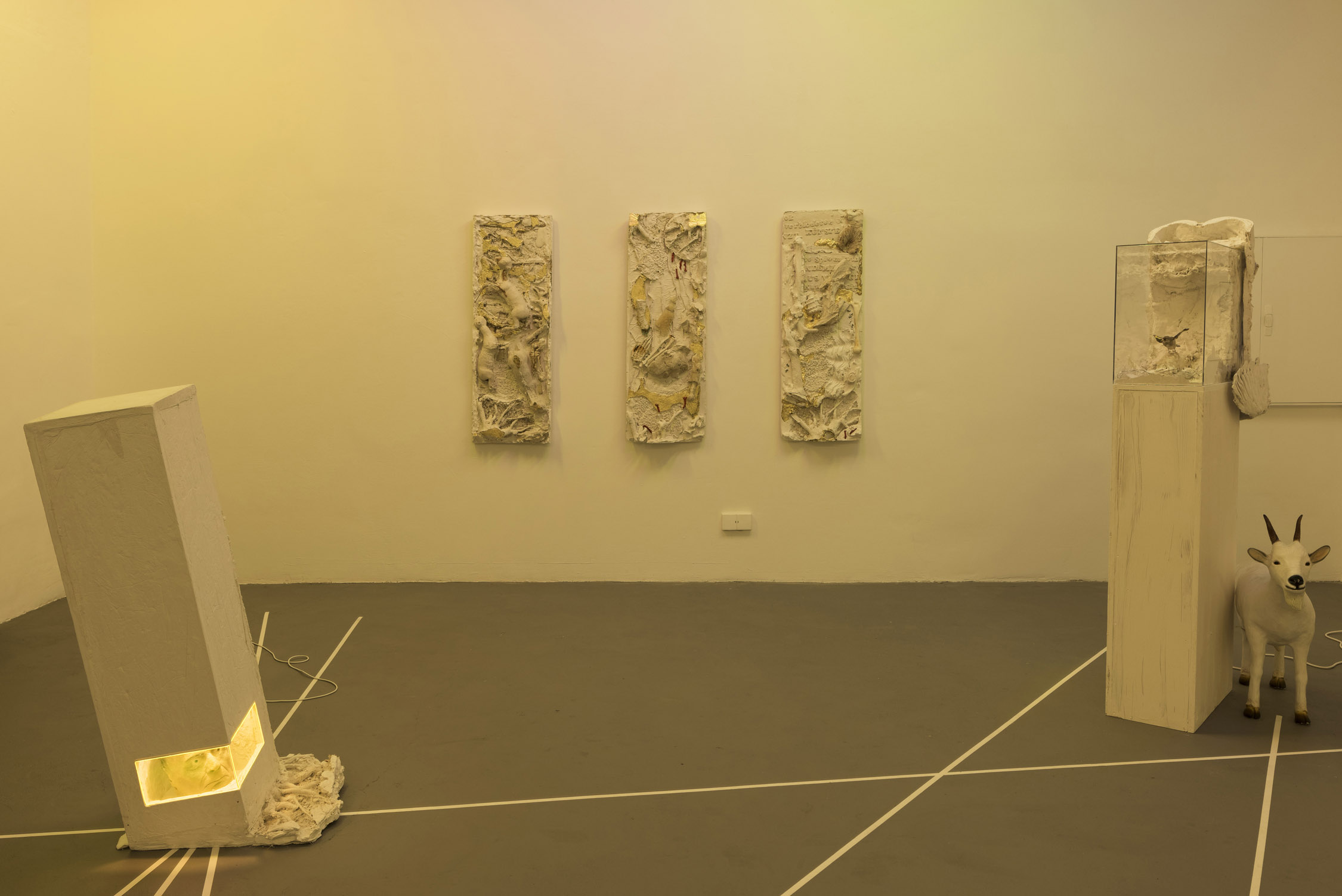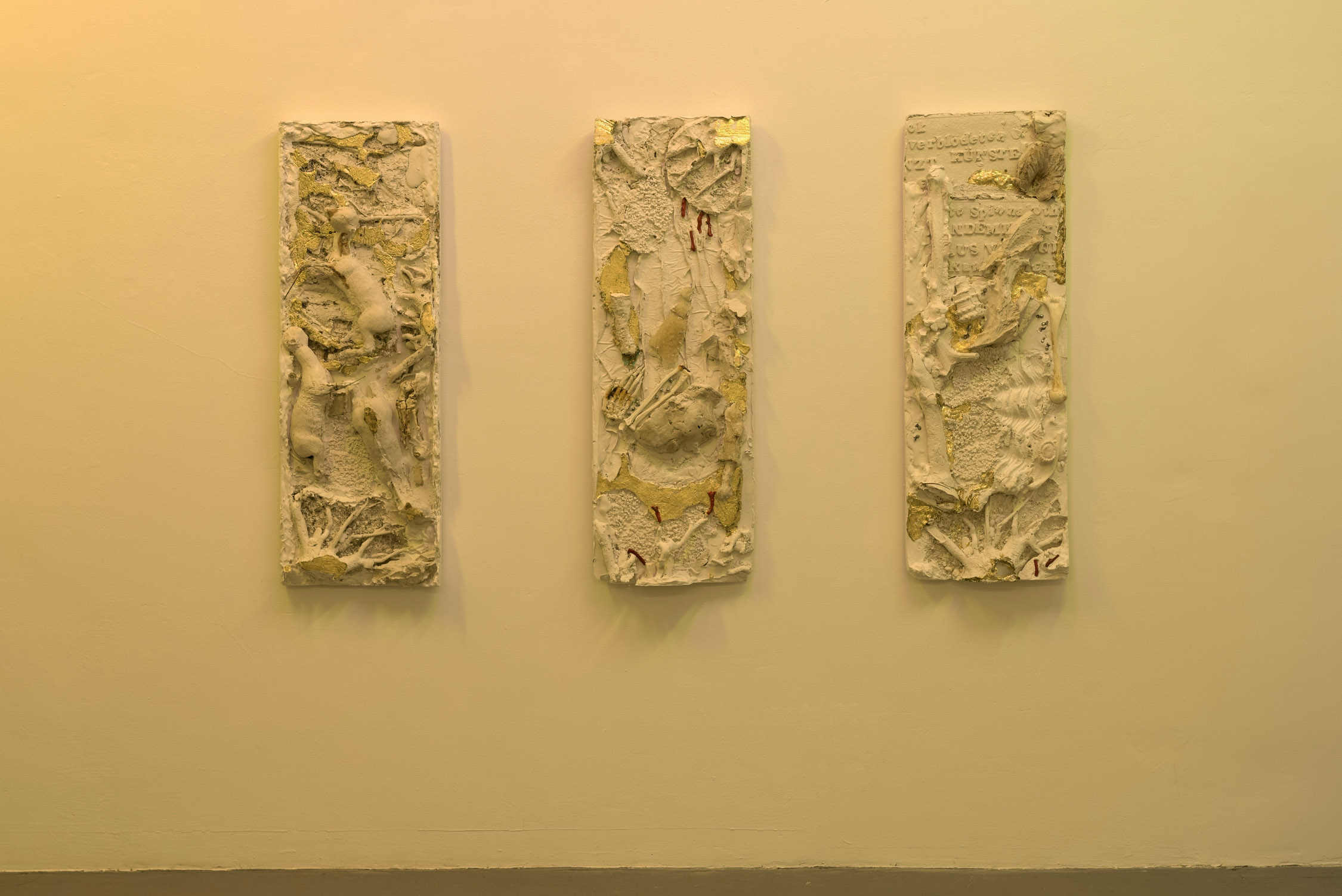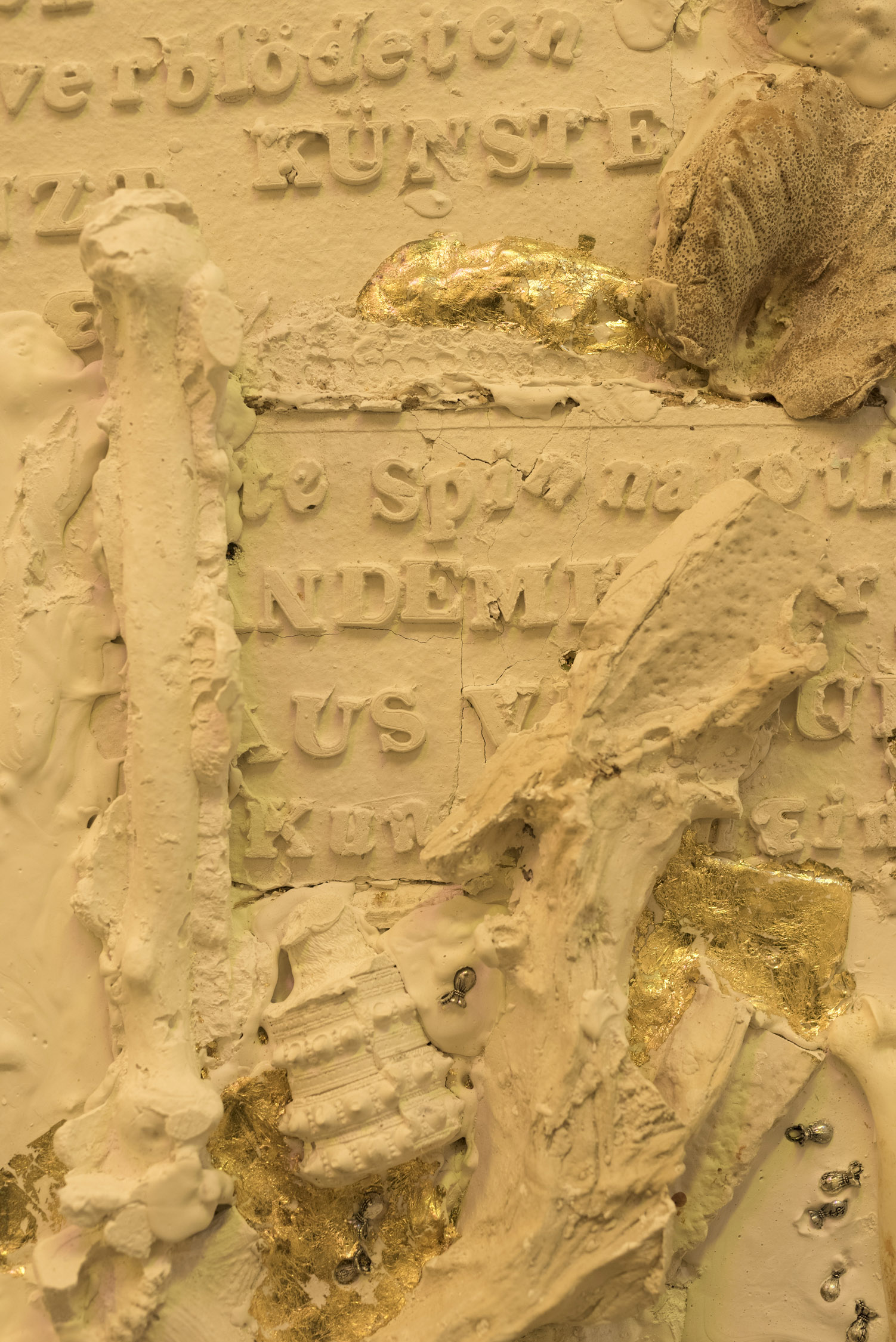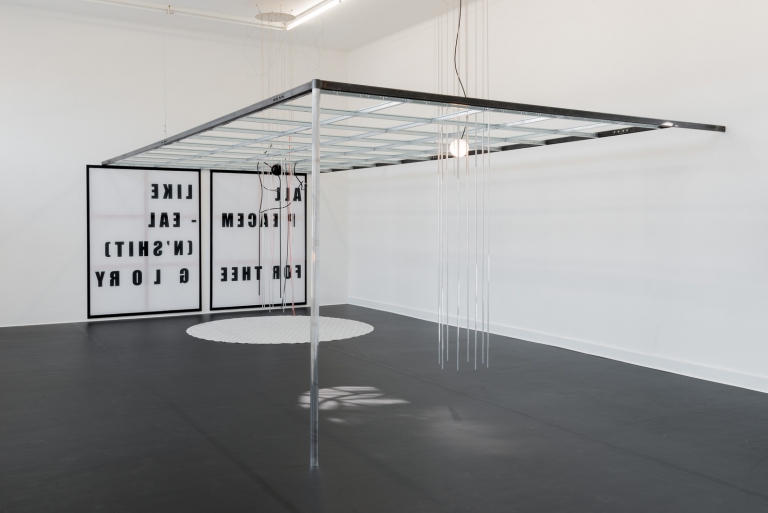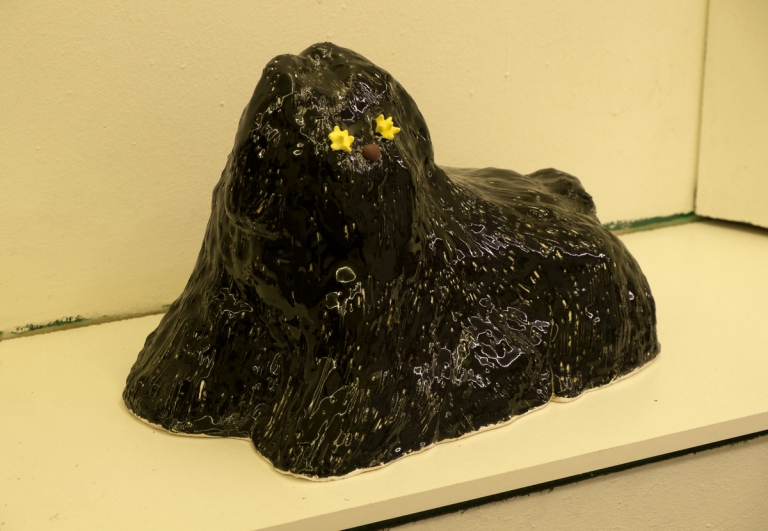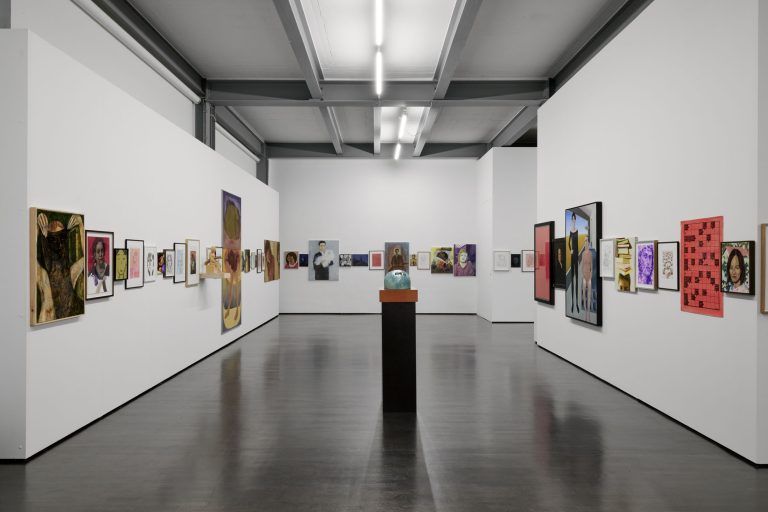Artist: Stephan Dillemuth
Exhibition title: Wenn die Wirklichkeit kommt
Venue: Neuer Essener Kunstverein, Essen, Germany
Date: June 1 – August 18, 2024
Photography: ©All images copyright the artist and Philipp Kurzhals/Neuer Essener Kunstverein
Note: Exhibition floor plan is available here
Stephan Dillemuth’s artistic practice takes place in a testing of techniques and spheres of self-determination, which he understands as bohemian research laboratories. This articulates an aesthetic that does not seek to emulate the manufacturing industry in another trade, but instead operates in an open-ended, dilettante, provisional and occasionally collective manner. Despite an astonishingly broad frame of reference, ranging from the Life Reform movement to blockchain technology and the beauty gallery at Nymphenburg Palace, Dillemuth has created an astonishingly concise oeuvre over the years that builds on one another.
Dillemuth’s exhibition at the Kunstverein, ‘Wenn die Wirklichkeit kommt’ (When Reality Comes), presents recent works that have a charged relationship to processes of reality production. The starting point for this may have been the simultaneous whirring of opposing reality machines, as Dillemuth experienced as a student during a news broadcast in the packed counterculture pub Ratinger Hof; moments of this have found their way into the exhibition via the lighting and the newsflash. The works framed by this transport another level of irritated or switched-off experience of reality, namely that of lockdowns during the COVID-19 pandemic. After all, they were all created at precisely that (historical?) moment that was experienced and will be remembered above all as a suspension or standstill. Certain formal elements allow conclusions to be drawn about this collective experience, including the numerous inclusions of birds in the sculptures on display and the large number of images of flora and fauna (‘Nature is coming back!’). After all, they were all created at precisely that (historical?) moment that was experienced and will be remembered above all as a suspension or standstill. Certain formal elements allow conclusions to be drawn about this collective experience, including the numerous inclusions of birds in the sculptures on display and the large number of images of flora and fauna (‘Nature is healing!’). The reliefs reminiscent of Pompeian excavation sites also evoke a further, albeit total, standstill of reality with the eruption of Mount Vesuvius. Concurrently, but perhaps above all, the works configure a permanent inventory of Dillemuth’s artistic work and bohemian research, which over the years has thrown off numerous syntagms that have congealed into a formal grammar. Examples of this are the sugar crystals used as leitmotifs, which go back to a preoccupation with the Life Reform movement, coloured Plexiglas, which Dillemuth has carried with him since a stay in Chicago at the end of the 1980s, and the goat, which has become Dillemuth’s scrawling signature as a ‘counter-figure ’or totem of the audience. All these syntagms of an exploratory artistic practice are moulded, combined, copied, bent and reassembled. Each work is a plaster golem that does not pretend to be made for eternity, but rather loves to crumble over time.
Equally important in this grammar are various pointing formulae: supposedly connecting floor drawings, showcase superstructures as well as peepholes and windows. It is as if Dillemuth constantly wanted to nail the mediation aspect to the arts and thus emphasize their fundamental relationship to society – be it a rejecting, commenting or shaping one. Which in turn alludes back to the preoccupation with reality; after all, realities, or rather their acceptance, are to a large extent mediations that could also turn out differently.
Stephan Dillemuth (*1954) was co-operator of the art space Friesenwall 120 in Cologne and UTV (Unser Fernsehen). He has had numerous solo exhibitions at Galerie Nagel Draxler, Cologne/Berlin; American Fine Arts, New York; Galerie für Landschaftskunst, Hamburg; Reena Spaulings, New York; Galerie Hussenot, Paris; Secession, Vienna; Konsthall C, Stockholm; Transmission Gallery, Glasgow; Uma Certa Falta de Coerencia, Porto; and the Lenbachhaus, Munich, among others. Additionally, he taught at art academies until 2020, first in Bergen, then in Hamburg and from 2005 in Munich.

